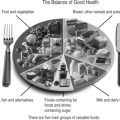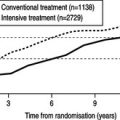Box 1.1
Hormones that are antagonistic to the action of insulin
Pancreatic disease
The pancreas can be damaged as a result of frequent bouts of pancreatitis, which is often precipitated by alcohol abuse or the presence of gallstones in the common bile duct.
The presence of carcinoma within the pancreas can also cause destruction of normal insulin-secreting cells resulting in the development of diabetes. Pancreatic disorders causing diabetes usually require treatment with insulin.
Valentina is a 73-year-old woman who presents with a 9-kg weight loss associated with nausea, polydipsia, polyuria and vulvitis. Her random blood glucose is 19.7 mmol/L and she has 2% glycosuria. Valentina is diagnosed with diabetes and is treated with dietary measures and glipizide 2.5 mg to relieve her symptoms quickly. She returns to the GP surgery 3 weeks later. Her blood glucose has fallen to 9.1 mmol/L, she has no glycosuria, but her weight has fallen by a further 2 kg.
In Valentina’s case, it is unusual to be nauseated with primary diabetes and weight loss should stop when the energy-losing glycosuria is abolished. Further investigation was thus necessary and she was found to have a carcinoma of the tail of her pancreas. Carcinoma of the pancreas can present as an apparent acute onset of diabetes and it is therefore important to think of secondary causes at the time of diagnosis, especially in elderly individuals with marked weight loss.
Endocrine disease
The secondary endocrine causes of diabetes involve excess endogenous production of hormones that are insulin antagonists (see
Box 1.1):
▪ In acromegaly, growth hormone is secreted in excess by the pituitary gland.
▪ In Cushing’s syndrome, the adrenal cortex makes excess cortisol due either to a primary tumour within the adrenal gland or to excess adrenocorticotrophic hormone (ACTH) production.
▪ In phaeochromocytoma there is excess secretion of adrenaline or noradrenaline by a tumour of the adrenal medulla or sympathetic plexus.
Hypertension, which is seen in acromegaly, Cushing’s syndrome and phaeochromocytoma, commonly accompanies type 2 diabetes. When faced with an obese, hypertensive person with an elevated blood glucose it is important to consider the possibility of an underlying endocrine disorder before accepting a diagnosis of type 2 diabetes
The exceedingly rare glucagonoma results in diabetes because glucagon also antagonises insulin.
Drug therapy
The thiazide diuretics, which are commonly used to treat essential hypertension, have a blood-glucose-raising effect by their inhibitory action on insulin secretion. Other drugs, such as corticosteroids (e.g. prednisolone), also make tissues relatively resistant to the effects of insulin and thus unmask diabetes.
![]()








